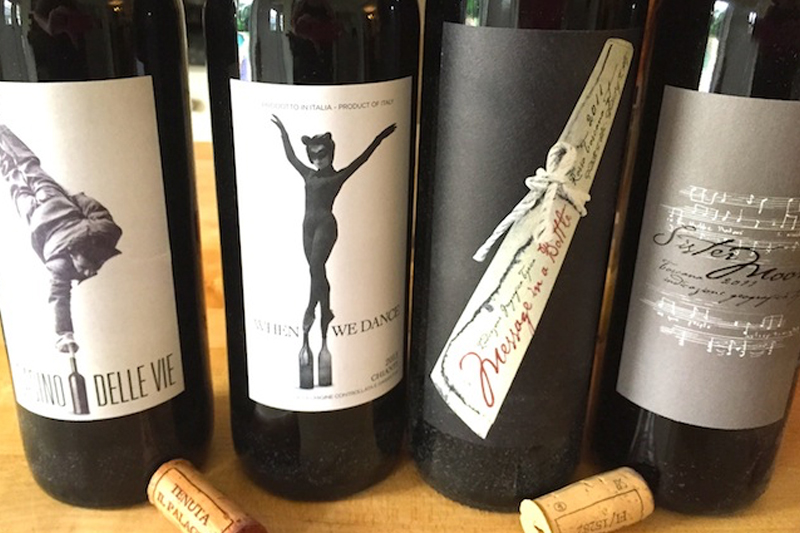Take a wait-and-see attitude on overly hyped wines
If you enjoy The Police, you probably know all about Sting and Trudie. Perhaps you were exposed to them while waiting in line, reading one of the trash mags that no one you know admits to buying. Add to your picture by sampling Tenuta Il Palagio Message in a Bottle 2013. When I first read of When We Dance, Sister Moon and Message in a Bottle, I thought, “Really, Sting and Trudie dabbling in the wine biz?” Then Jancis Robinson gave them a favorable nod, so I decided to look into the wines. These were difficult to locate, so I decided not to review them here. The 2013s are findable. Message is blended of 70 percent Sangiovese, and 15 percent each Syrah and Merlot, then aged a year in French oak. Cherry, blackberry and spicy barrel notes, 90 points under $20. If you enjoy Chianti with a pronounced cherry cast, the 2013 When We Dance should fill the bill. Be careful here; there is also a Message in the Bottle Bianco by Il Palagio.
Few readers buy Chateau D’Yquem, probably due to pricing. Big-buck buyers, Wine Access has half bottles of 97-point 2010 at $299. Lowest comparable was $365, with 750s at $475. However, if you love Sauternes, as I do, ask your friendly wine shop person to bring you some Chateau La Tour Blanche 2007. You can find this 96-point McD rating in the $60 range, ready now, and the 2014, also 96 McD, ready in 2022, at $38. La Tour Blanche has excellent-value Sauternes, year in and out. I believe the ‘07 and ‘14 are the best recent. My notes on 2007 are a bit cryptic: Flawless, straw-gold, apricot, pineapple, butter, vanilla bouquet, lots of botrytis flavors, vanilla custard, more apricot, trop. fruit and honey supported with sufficient balancing acidity to offset sweetness. Finishes cleanly with some orange peel and nut flavors. The 2014 notes: Reminds of 2007 but more potential; lovely apricot and orange notes; botrytis characters in place (thyme) a bit hot at this point, if you don’t swirl off alcohol. However, the fumes expanded the aromas wonderfully.
Avoid the presale hype on 2014 Chateau Gloria St. Julien. Most critics found the 2015 better. There are two options here. Wait until 2015 release later this year, when ‘14s will decline in price, or wait a few years to buy the ‘15s. Neither will be ready to drink for at least four years. Both were sequentially hyped as the best vintage since the 2005. Gloria doesn’t normally appreciate other than time value of money and inflation. You can still find 2005s under $70. Jeff Leve reporting in the Wine Cellar Insider tasted the 2005 on 6/29/15. His partial review sounds perfect, “Showing light ruby with bricking in the color, the earthy, tobacco and cedar chest nose, with its medium bodied, soft, red berry finish is clearly in a good place today.” For those who wish to experience aged Bordeaux ready to drink and affordable, the 2005 Gloria would be a good choice.
Regulars are aware I am an avid reader. I just wrapped a 6-volume read on the history of food. The broad title is, “A Cultural History of Food.” The volumes cover from the hunter-gatherer to the modern era. There were many contributors. The editors were different university history professors, and it appears each volume is a compendium of grad papers. Therefore the writing styles range from dry, pedantic, statistical to historically described patterns to anecdotal to narrative. The word selection and the phrasing are varied also. The information is more accurate as the volumes approach the modern. Volume 1 has quite a bit of speculation, but the writers explain that the bio-archeology is still somewhat limited due to the time decay of orts. In a later volume, however, intact dietary remains from Insula Orientalis II at Herculaneum were found in sewers, usually located beneath kitchens. These were used for the disposal of both human excrement and kitchen waste. These sewers held volumes of dietary evidence including encapsulated mineralized seeds, bones and shells. The waste remained intact because it was completely sealed by lava flows from Vesuvius. The evidence here and at Pompeii provides a very detailed look at life during 79 AD. These are a wonderful look at the history and the societal constructs surrounding food from about 6,000 BCE to our modern era.
















































